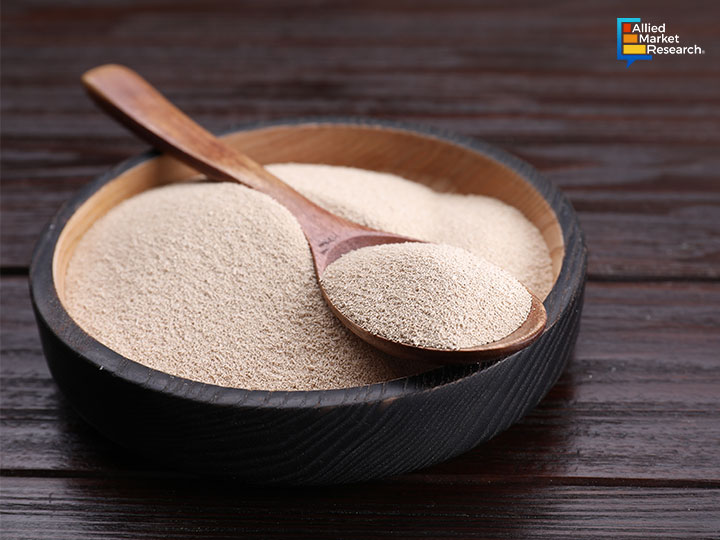Yeast Extract: A Valuable Ingredient for Food Producers

24 Jun
2025
Highlights:Â
- IntroductionÂ
- Natural, clean-label flavor boosterÂ
- Reduces salt and MSG naturally
Yeast extract is becoming an important part of food and beverage production. Companies across the world use it to add taste, improve recipes, and offer a clean-label alternative to other additives. This has become even more significant, as food makers are searching for ingredients that not only boost flavor but also satisfy evolving consumer expectations.Â
Understanding the Role of Yeast ExtractÂ
Yeast extract is a natural ingredient derived from the cells of yeast. Producers make it by breaking yeast cells apart and collecting the liquid that contains proteins, vitamins, and flavor compounds. Food manufacturers appreciate this extract because it can enhance savory notes in a very smooth way. It is often used in soups, sauces, snacks, seasonings, and meat alternatives.Â
Unlike many synthetic additives, yeast extract contains amino acids and peptides that contribute to taste. This can help reduce salt content or improve the flavor profile of recipes that use plant-based proteins. Because it comes from a fermentation process, it fits well with the move toward more “natural” and transparent labels.Â
A Response to Health and Clean-Label NeedsÂ
Companies today are looking for ingredients that help them meet health and clean-label goals. Many product developers see yeast extract as a good option when they want to replace MSG without losing savory taste. Yeast extract brings umami flavor without the need for MSG. It can also enhance salty, roasted, or meaty notes without changing the basic recipe.Â
Recent industry reports have highlighted its role in weight management products too. For example, in June 2025, Angel Yeast, one of the world’s largest yeast companies, shared new data about its yeast-based ingredients on Sustainable Gastronomy Day. The company noted promising results when using yeast-based ingredients in recipes designed to support weight control. Yeast extract and other yeast-derived ingredients are now becoming more common in functional foods that aim to improve wellness. According to Allied Market Research, the yeast extract industry accounted for $440.9 billion in 2023 and is predicted to generate revenue share of $1 billion by 2035, citing a CAGR of 7.5% during 2024-2035.Â
Developments in Production and ApplicationÂ
Manufacturers of yeast extract are improving their processes. Modern techniques allow them to reduce salt content and boost protein levels to suit different food types. Clean-label yeast extract is one of the most popular versions now. It contains no artificial flavors, colorants, or preservatives, and can be labeled simply as “yeast extract” on product packaging.Â
In Europe, Asia, and North America, food companies are including yeast extract in meat substitutes to mimic the umami flavors of real meat. Snack makers add it to chips and crackers as a clean alternative to other savory seasonings. Producers of instant noodles and prepared meals appreciate its ability to boost flavor intensity without upsetting the nutritional balance of a product.Â
Today’s products also involve specialized yeast extract blends. Some versions focus on boosting the intensity of brothy flavors for soups, while others help to round out the taste of vegetarian cheese or plant-based dairy products. This ongoing innovation supports diverse recipes and allows food makers to design recipes that suit local preferences.Â
Looking AheadÂ
Yeast extract is becoming a standard part of food manufacturing as companies look to simplify ingredient lists and improve the nutritional profile of their products. Its natural origin, functional properties, and stable supply make it very useful for the food and beverage industry. Producers are projected to increase the use of yeast extract since they are trying to serve customers food with better taste, less salt, and fewer synthetic additives.Â
Final ThoughtsÂ
Yeast extract is an important ingredient for food companies. It helps make food taste better and can fit many types of recipes. It is also easy to use and comes from a natural source. Businesses, these days, are working with yeast extract because it supports their goals for taste, health, and clean labels. It is expected to remain a useful choice for food makers in the years ahead.Â
Reach out to our experts  to know about the changing dynamics of the yeast extract industry.Â

Koyel Ghosh
Author’s Bio- Koyel Ghosh is a blogger with a strong passion and enjoys writing in miscellaneous domains, as she believes it lets her explore a wide variety of niches. She has an innate interest in creativity and enjoys experimenting with different writing styles. A writer who never stops imagining, she has been serving the corporate industry for the last five years.
Avenue: Entire Library membership of Allied Market Research Reports at your disposal
- Avenue is an innovative subscription-based online report database.
- Avail an online access to the entire library of syndicated reports on more than 2,000 niche industries and company profiles on more than 12,000 firms across 11 domains.
- A cost-effective model tailored for entrepreneurs, investors, and students & researchers at universities.
- Request customizations, suggest new reports, and avail analyst support as per your requirements.
- Get an access to the library of reports at any time from any device and anywhere.
Related Post
-
How are Submarine Cables Transforming Global Connectivity with Enhanced User Experience?
-
Endoscopy Procedures: Transformations in Techniques and Applications
-
AI-Powered Video Analytics: How the Product Actually Works for enterprises
-
Painting Robots: Transforming Precision Coating and Creative Applications
-
Innovations in Pharmacovigilance Systems Advancing Patient Safety
-
Understanding Edge Security: Keeping Data Safe Near the Source
-
Exploring the Use and Advancements of 3D Laser Scanners in Professional Applications
-
Reinforcing Industrial Controls with Smarter Tools and Training








